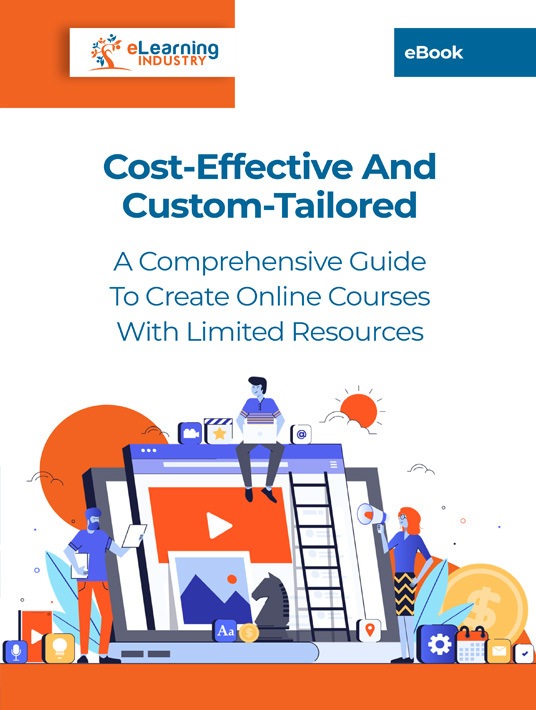How To Create Cost-Effective Online Courses For External Partners
External sales channels take multiple forms. They could be regional sales reps who are based in the field. They move around a lot and only come to HQ once a month, or maybe every quarter. Or they might be distribution centers and field officers, or seasonal hires for peak season. You want them to have the same skillset and knowledge base as your resident sales staff. How can you streamline their online training without pressing your budget? Here are 6 top tips to develop online training courses for your external sales partners without breaking the bank.

1. Harness The Power Of Eavesdropping
These days, most corporate phone calls are recorded. Customers are generally made aware of this, and it can be a free online training tool. There are multiple methods for utilizing this resource. You could pick individual calls and break them down, offering alternate wording, pointing out mistakes, and course-correcting. Put these annotated clips in an archive that employee training participants can access at their own leisure. It could be an audio clip that stops at certain points for trainer commentary. Or it could be plugged into a video with relevant text boxes and popups. Ensure the online training library is available on mobile, with easy start-stop-pause-rewind functionality.
2. Focus On Communication Skills
We’ve all had conversations where the tone and wording made a difference. The same set of words could make you giggle or cry, depending on how they’re delivered. Think of the word "hello" as spoken by a partner, your boss, or your parent. Now bring this out using blended training sessions. They don’t have to be fancy or pricy. They can even be done as Skype sessions or WhatsApp calls—both are free. Train them for the tone of voice, appropriate register, body language, and non-verbal communication. Something as basic as smiling, frowning, or tilting your head at just the right time could influence a sale. Another great way to build positive communication skills is to develop sales simulations.
3. Use Existing Technology
You don’t necessarily have to spend money on a new Learning Management System or opt for one with all the bells and whistles. Sometimes, if you really think about it, you have all the tools you need. Want a larger screen? Employees can cast their smartphones onto a big-screen TV, allowing more people to see it. Or they can link it to a projector. That essentially turns your tiny screen into a webinar. You also don’t have to buy apps or cloud storage. All your external partners can access online training materials on their existing devices—laptops, tablets, email, or mobile phones. You can train them via intranet as well.
4. Optimize Social Media
We’re pretty sure there’s already a social media group for your sales team. It’s probably used for other purposes—casual chat, memes, birthday wishes. Turn it into an online training tool. Share relevant articles with sales tips. Run surveys and polls on closed Facebook groups. Initiate moderated discussions, calling on individual members to ensure they actively participate. Create scavenger hunts and quests, seeding clues on a group chat. Upload audio and video clips as JIT training tools. This way you can encourage sales staff to ask the group for help on the go. If they’re in a tight spot, colleagues can offer real-time tips to get them through.
5. Cash In On Competition
Sales is a high-adrenaline job. Many team members are born go-getters with a naturally competitive spirit. This is generally a good thing, but it can get tricky when teammates start to sabotage each other. On the other hand, that one-up(wo)manship sometimes spurs better performance. Design little online training tasks and put up a voluntary leaderboard. It could be something simple. Like sharing an article series then having a quick-fire quiz based on the series’ content. Run the quiz as a "live" chat session for added adrenaline. The fastest right answer wins! Another game mechanic to consider is badges or even points. Most external sales partners will try to earn more than their peers for bragging rights. Just make sure that the competition doesn’t get so fierce that it damages online training camaraderie.
6. Schedule Weekly #AMA (Ask Me Anything) Sessions
While external sales channels are often aware they can ask colleagues for help at any time, have more explicit sessions. Once a week, at a synchronized time, have a group lesson. Employee training participants can send you questions individually. For example, a tricky situation they’ve encountered, or something they’re curious about. Or you could look through the week’s recorded calls and pick out a problematic one. The group can then discuss the question or call. First, get learners to share their thoughts first. Then offer a trainer’s perspective. Set aside adequate time as this kind of lesson tends to drag on. But it’s extremely effective and has no cash cost beyond smartphone data bundles. And since this is a sales team, you’re probably paying for those already.
When your team doesn’t physically occupy the same office space, developing online training courses is the natural option. When you also have budgetary constraints to contend with, you have to get a little more creative. It’s still doable. You just need the right approach and some lateral thinking skills. Use recorded customer calls as an online training tool to emphasize effective communication. Train with the technology they already have (e.g., smartphones and personal social media accounts). Tap into the natural competitiveness of sales teams, turning it into a positive collaborative force. Schedule weekly Q&A sessions via webcam, live streaming, or teleconferencing platforms.
Whether you’re creating online courses to sell or to hone your in-house talent, our eBook Cost-Effective And Custom-Tailored: A Comprehensive Guide To Create Online Courses With Limited Resources features all the information you need. From how to choose the best LMS and eLearning authoring tools to ways to train your team on a tight timeline. It even features insider secrets to develop online training courses that become instant best-sellers as well as common errors to avoid when developing skill-based certification courses for your remote employees.






